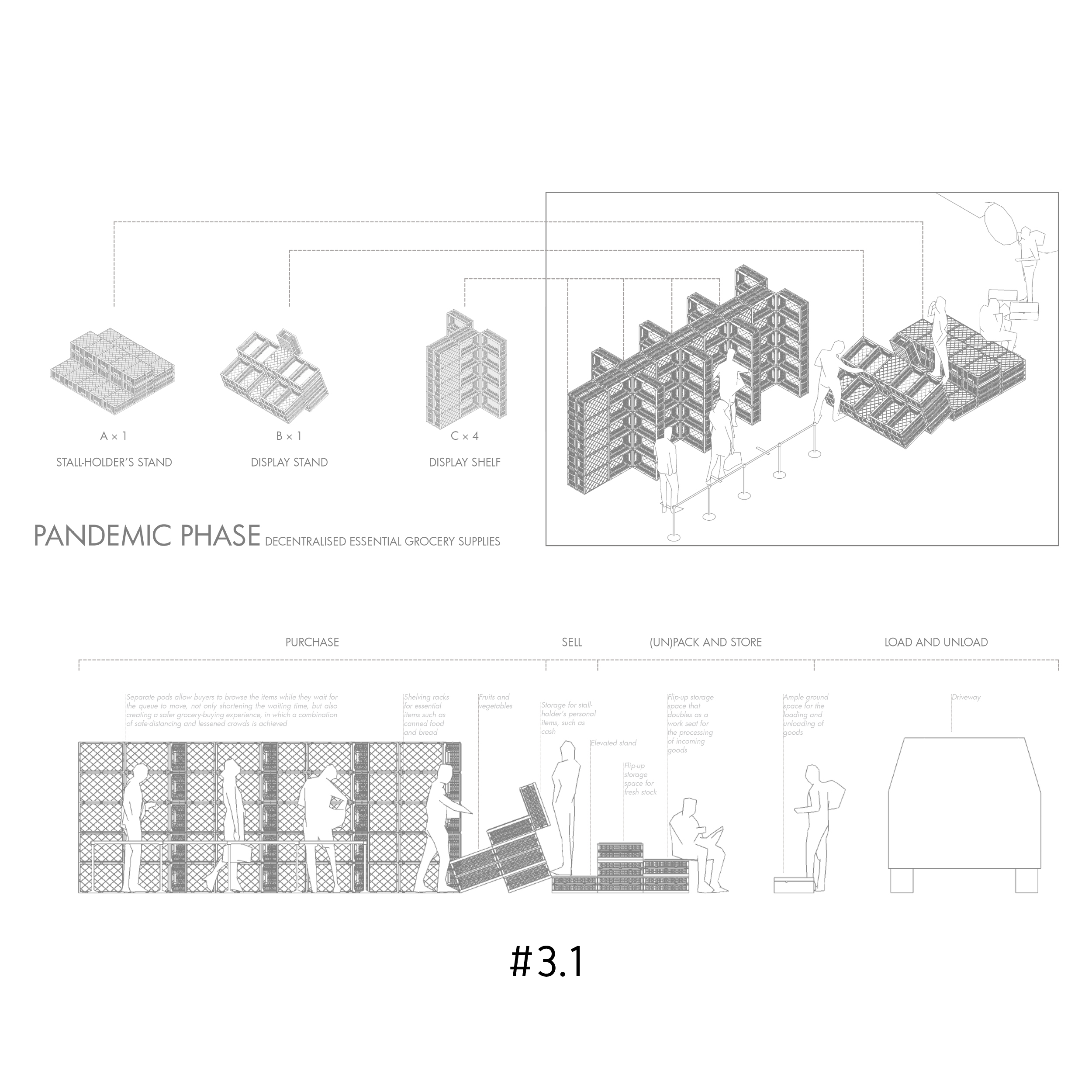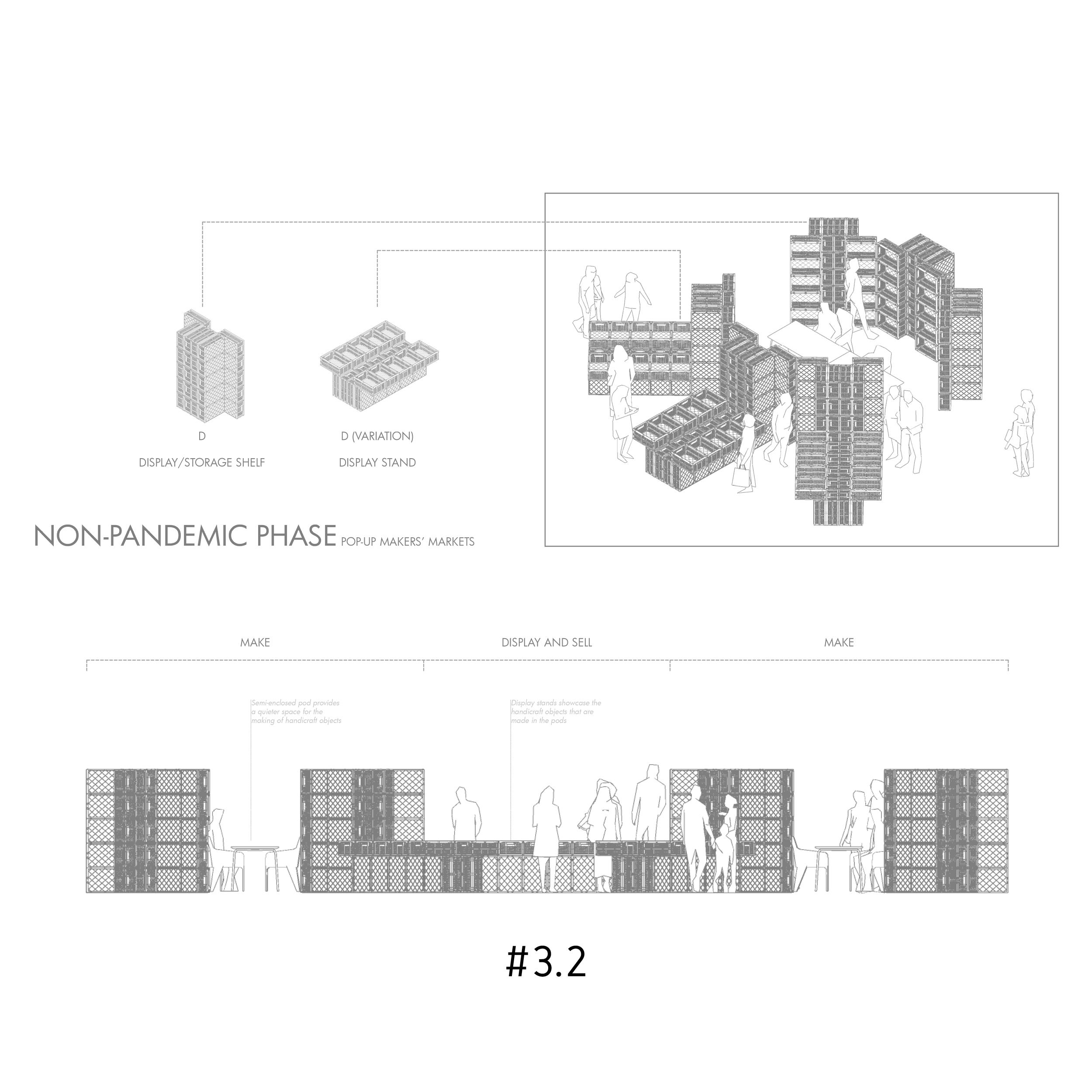Rapid Design Integration
PROGRAMME
BACHELOR OF ARTS IN ARCHITECTURE
STUDENT
Chloe Lau Jia Yee, Koh Zhi Hao, Ryan Neo
YEAR
3
ADVISOR/TUTOR
Ar. Lee Tat Haur & Kenya Endo

The micro-site of intervention for our group is Whampoa Community Club and how its facilities or spaces can be retrofitted swiftly and efficiently for safer usage. The premise is that the intervention will not heavily sacrifice the enjoyment of using the existing facilities and spaces. Comprehensiveness of the intervention has been taken into account to ensure that existing materials, furniture and spaces can be redesigned, reconfigured and maintained. The theme of designing small, but with big ideas, was explored.
Foldable plastic vegetable crates that are commonly found around Whampoa, especially along grocery and supermarket loading bays, were thus chosen for their availability, durability, modularity and proven structural integrity. Strategic aggregation of the crates was then achieved using widely available cable ties that can be commonly found in the sundry shops lining Whampoa’s HDB estates. Due to the peculiar joinery between adjacent crates and cable ties, swiveling and folding mechanisms could be achieved to result in interesting transformations and permutations from a single base module. The further aggregation of base modules thus resulted in each rapid design deployment.
Three implementation timeframes of differing scales were then chosen as a gesture to the ever-evolving nature of the new age of pandemics. The first timeframe involves a ‘during pandemic’ phase, whereby the rapid design responds to the immediate pain points of the CC’s users and tends to address utilitarian and immediate needs. The second timeframe involves a ‘pandemic recovery’ phase, whereby the rapid design is able to transform to adapt to the yearning for increased communal activities (with safe distancing considerations in mind). The third timeframe involves a ‘back to normality’ phase, whereby each individual’s rapid design is able to integrate with each other to be deployed at decentralised community hubs (as previously laid out in the group’s master plan for Whampoa) that further activate and revitalise public spaces.








